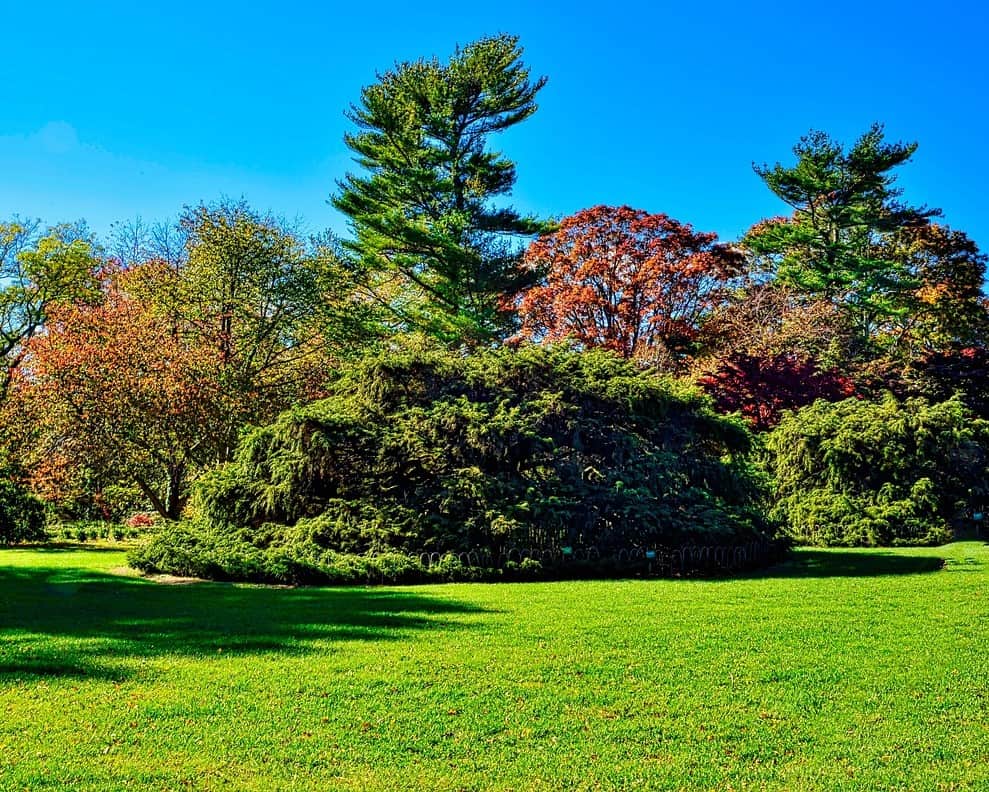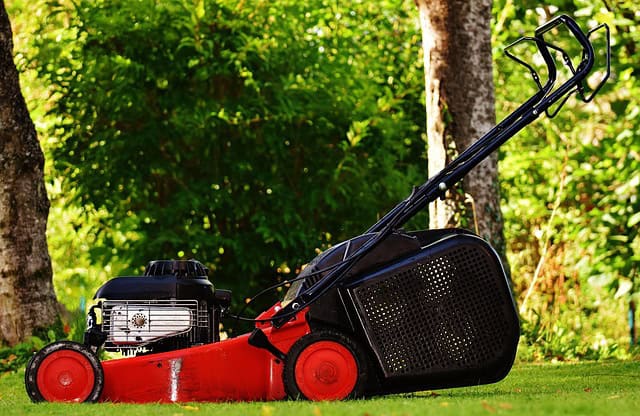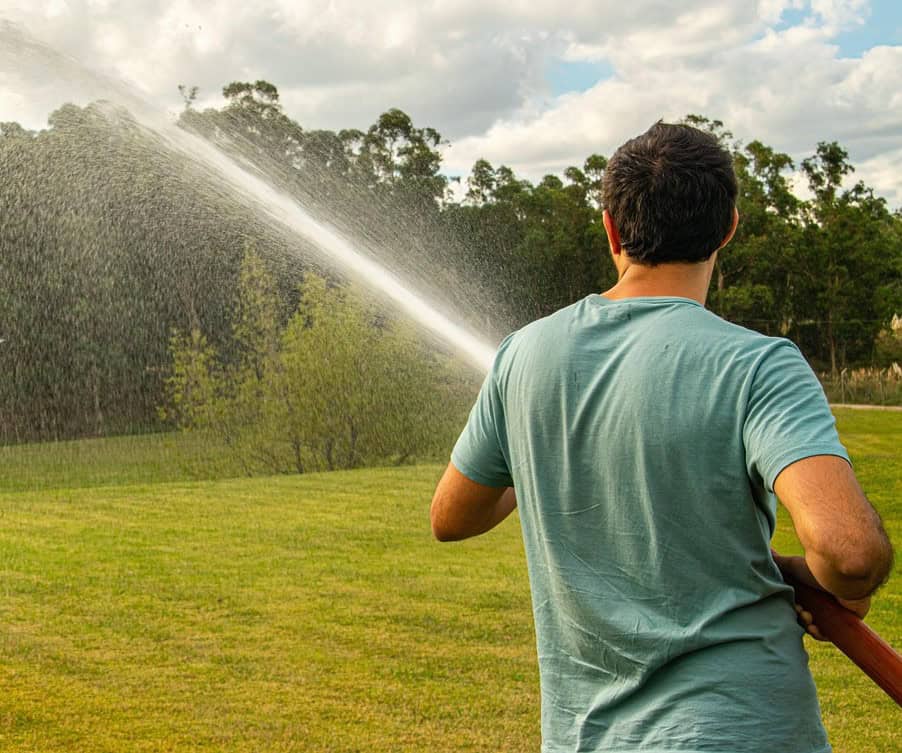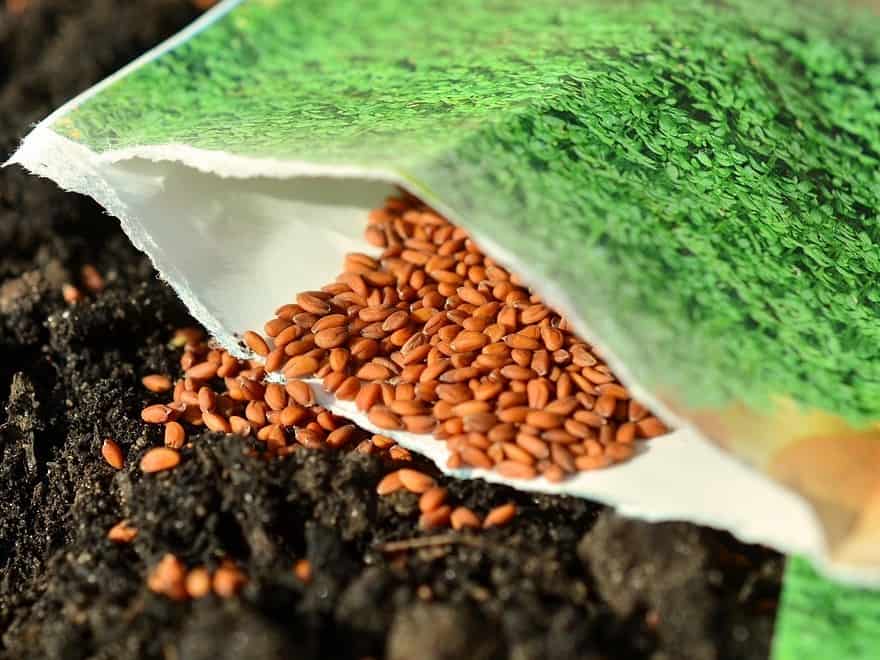How to Cultivate The Perfect Lawn
Table of Contents
The perfect lawn that is beautiful, healthy, and pleasing to the eye doesn’t happen by accident. Whether you’re starting a new lawn or trying to improve your old lawn, the process requires patience, planning, and precision. With the right lawn care and dedication, you can achieve great results.
Lawn Preparation – Build the Foundation

Before you sow the seed, you need to allow the soil to settle. Start by clearing away any dead grass, debris, or weeds from your old lawn or area for your new lawn.
Improve Your Lawn with Soil Prep:
- Use a lawn rake or garden fork to break up compacted areas.
- Add topsoil and compost to enrich poor soil.
- For best results, use a lawn roller lightly to level and compact the soil surface.
- Always make sure to test drainage; poor drainage leads to yellowing and patchy grass.
Choosing and Sowing the Right Grass Seed
When it comes to cultivating the perfect lawn, choosing the right grass seed is paramount. Factors such as climate, soil type, and intended use of the lawn should guide your decision-making. Cool-season grasses thrive in northern climates, offering lush greenery during spring and fall, while warm-season varieties are ideal for southern regions, with their resilience to heat and drought. Taking the time to analyze your lawn’s environment can significantly enhance its vitality.
Once you’ve selected the appropriate seed, the next crucial step is sowing it correctly. Timing plays a pivotal role; early spring or early fall is often ideal for optimal germination. Preparing the soil is equally important — remove debris, aerate, and ensure proper pH levels. To maximize coverage, consider using a seed spreader, which ensures an even distribution and minimizes bare patches. Finally, don’t forget about the watering regime; consistent moisture during the germination phase encourages strong root development, setting the stage for a vibrant and resilient lawn.
Sowing Grass for New and Existing Lawns
- For a new lawn, sow the seed evenly using a spreader.
- Lightly rake over the seeds to cover them.
- Apply lawn fertiliser or lawn food to promote root growth and healthy establishment.
- Keep the area moist to help seeds germinate quickly.
Tip: Sowing grass in early spring or spring and summer gives the best results.
How to Mow the Lawn for Success

Mowing Tips to Keep Your Lawn Healthy
- Set your mower blade high—cut the grass too short and you’ll stress it.
- Mow regularly but avoid cutting more than one-third of the blade.
- For a new lawn, avoid mowing until the grass reaches 3 inches.
Regular mowing helps your lawn grass grow thicker, crowding out lawn weeds and encouraging healthy grass.
Feed and Fertilise for the Best Lawn
Cultivating the perfect lawn goes beyond just regular mowing; it requires a thoughtful approach to feeding and fertilising. Understanding the specific needs of your grass type is crucial, as different varieties thrive on different nutrients. Cool-season grasses often benefit from a nitrogen-rich fertiliser in early spring, while warm-season varieties may require a balanced nutrient mix during their peak growth in summer. This tailored feeding promotes lush growth and also strengthens root systems, making your lawn more resilient against drought and pests.
The timing of your fertilisation can significantly impact results. Early morning applications allow dew to help absorb nutrients, while avoiding heavy rains can prevent washout and ensure that your efforts aren’t wasted. Incorporating organic options like compost can enhance soil health over time, leading to improved water retention and microbial activity that supports grass growth. By taking these factors into account, you can create a thriving ecosystem beneath your feet, transforming your lawn and outdoor space. Fertilise 3–5 times annually using a range of lawn products suited to your grass type and soil.
Weed, Moss & Lawn Care Maintenance
The perfect lawn requires a delicate balance between nurturing grass and managing the inevitable competition from weeds and moss. While many homeowners focus solely on their grass, neglecting these intruders can lead to an unsightly garden or yard. Weeds not only steal nutrients and water but can also harbor pests that threaten lawn health. Conversely, moss often indicates underlying issues such as poor drainage or compacted soil, which will need addressing for a thriving outdoor space.
To combat these challenges, consider an integrated approach that emphasizes soil health and resilience. Aerating your lawn can improve water penetration and alleviate compaction, giving grass roots room to grow while discouraging moss. Maintaining proper pH levels and incorporating organic fertilizers can create an environment that favors grass over weeds. This proactive strategy will enhance the beauty of your lawn but will also foster a sustainable ecosystem.
Watering Your Lawn the Right Way

When it comes to creating the perfect lawn, understanding the timing and technique of watering is crucial. Many homeowners make the mistake of watering their lawns too frequently, which can lead to shallow root systems and increased vulnerability to drought. Instead, aim for deep, infrequent watering sessions that encourage roots to grow deeper into the soil. Early morning is the ideal time for this, allowing grass blades to dry off during the day and reducing the risk of fungal diseases.
Consider using a moisture meter to gauge when your lawn truly needs water. This tool can provide insights into the soil’s moisture levels, preventing over-watering and promoting a healthier ecosystem beneath the surface. Additionally, incorporating techniques like drip irrigation or soaker hoses can deliver water directly to the roots, minimizing evaporation and maximizing efficiency. By fine-tuning your watering strategy, you’ll not only cultivate a lush, vibrant lawn but also contribute positively to water conservation efforts in your community.
Lawn Maintenance Essentials
Core Tips to Give Your Lawn a Green Carpet Look
- Aerate compacted soil using a garden fork to improve air and nutrient flow.
- Feeding your lawn, especially in spring or summer, boosts color and health.
- Consider edging your lawn for a polished appearance.
- Use a lawn care calendar for routine tasks like fertilising, mowing, and watering.
Repairing and Overseeding Your Lawn

Repairing and overseeding your lawn is not just about restoring its beauty; it’s an opportunity to cultivate a lawn that thrives year-round. The process begins with assessing the existing turf, identifying bare spots, and determining the underlying issues, be it soil compaction, pests, or inadequate sunlight. By addressing these factors, you create a fertile environment for new grass seeds to flourish. The right timing is crucial; early spring or early fall are ideal for overseeding, allowing the seeds to germinate in optimal conditions.
After loosening the soil with a rake or aerator, spread a high-quality seed mix tailored to your region’s climate. This blend will not only enhance the visual appeal but also introduce varieties that resist disease and drought, ensuring long-term resilience. Watering lightly and frequently after overseeding is essential, as it helps maintain moisture without washing away the seeds. Consider integrating organic fertilizers to nourish the new growth, fostering a robust lawn that can withstand the challenges of changing seasons.
Professional Lawn Care Option
Professional lawn care services offer expertise that goes beyond basic mowing and trimming. These specialists understand the nuances of soil health, pest control, and seasonal variations, tailoring their strategies to meet the unique needs of your landscape. They employ advanced techniques like aeration and overseeding, which not only enhance grass growth but also improve resilience against drought and disease.
Investing in professional lawn care can save you time and frustration. Instead of spending weekends battling weeds or deciphering fertilizer schedules, you can enjoy your outdoor space to the fullest. Professionals also utilize eco-friendly practices, ensuring that your lawn flourishes while minimizing environmental impact. Cultivating the perfect lawn is not just about appearance; it’s about creating a sustainable ecosystem that thrives year-round.
Conclusion
The journey to a perfect lawn is a rewarding task that involves dedication and attention to detail. Don’t forget to adjust your lawn care practices according to seasonal changes. With persistence and the right knowledge, your lawn can become a beautiful extension of your home and enjoyable all year round.



